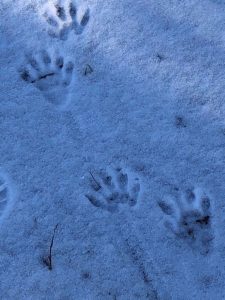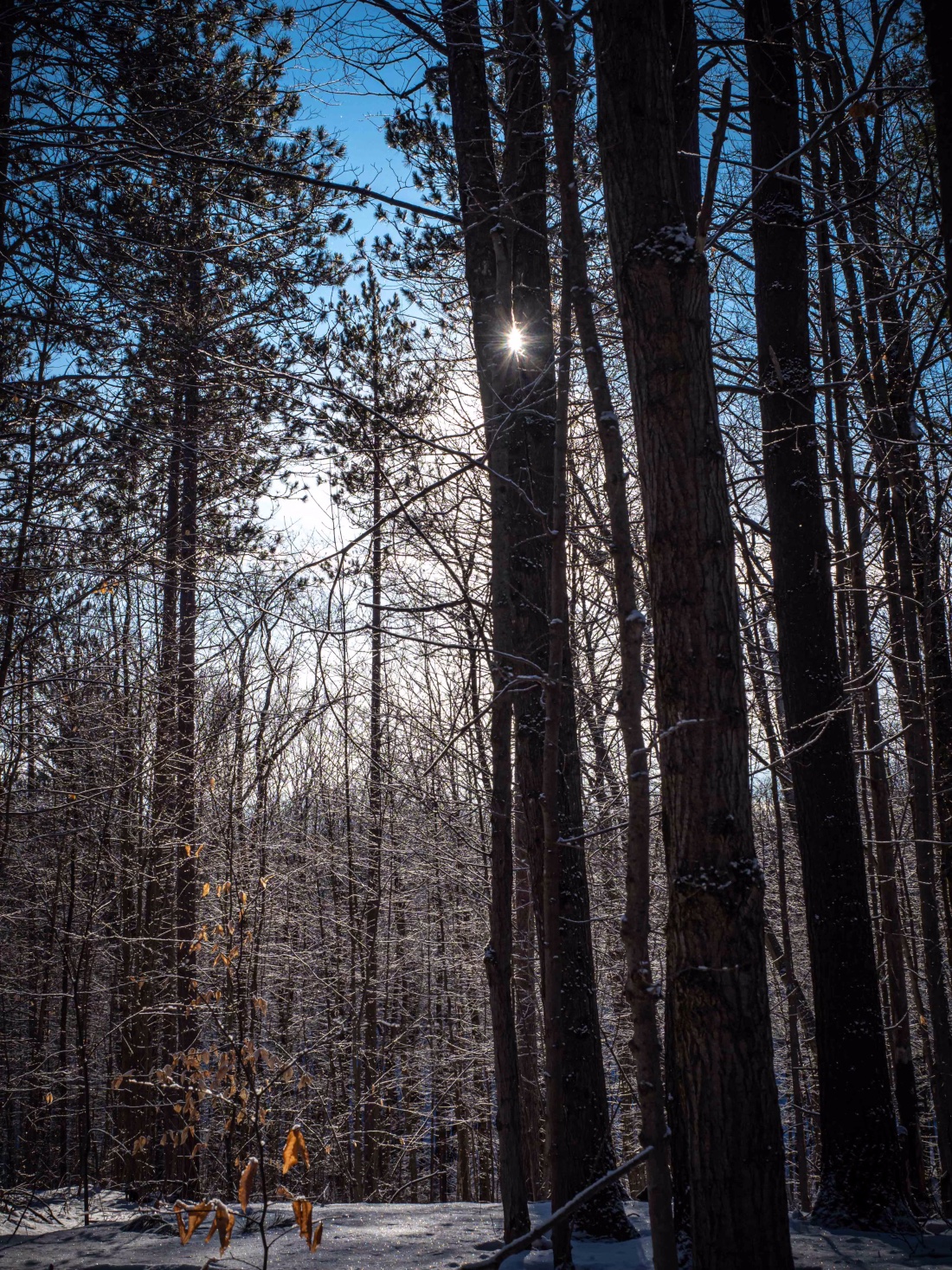As I returned from a walk in the forested parkette in my neighbourhood, I reflected once again how at peace I felt compared to when I set out, full of the issues currently dominating my life. It is amazing how something small—the chattering of chickadees or the rat-a-tat-tat of a woodpecker on the tree high above, or the sunshine filtering through the trunks of the deciduous forest, or the appearance of some interesting tracks in the snow, or even the chance encounter of a fellow walker—can bring me down to earth and calm my jangled nerves.
 This simple remedy is so readily available to anyone who can walk even a short distance. No drugs, no admission ticket, no belonging to a group required. Simply a willingness to go outside and use our senses to discover the sights and sounds of nature. You could think of the experience as getting your “nature fix.”
This simple remedy is so readily available to anyone who can walk even a short distance. No drugs, no admission ticket, no belonging to a group required. Simply a willingness to go outside and use our senses to discover the sights and sounds of nature. You could think of the experience as getting your “nature fix.”
Of course, the “fix” just leads one on to the “motherload” – a longer, more adventurous walk, alone or with one of several organizations that offer group walks. Either way, local resources are plentiful. Scattered through the city and neighbouring municipalities, we have many little parks and parkettes, such as Scout Valley, Centennial Park, and Tudhope Park.
Then there is the provincial park system of Bass Lake, Mara, and McRae Point, and a wonderful rail trail (Lightfoot Trail) maintained summer and winter by the city–to name just a few nearby. Or you can always find a quiet street to saunter along, within easy distance from your home.
Regionally, The Simcoe County Forest offers an amazing number of forest tracts for public use, only restricting access while logging (sustainably striking a balance between serving recreational needs and managing the forest appropriately). This link features many different trails around the county – some not so close. However, you can go to the Simcoe County website and use their Interactive Map to view the recreational properties, which will show you all the tracts within Simcoe County, including the ones local hikers mostly access – Strachan, Oro, Walsh, to name a few of the tracts clustered around Bass Lake Side Road East and Line 7 of Oro-Medonte. The Copeland Forest offers 4,400 acres of forest crisscrossed by trails, with a broad diversity of ecosystems right within its reaches, just a 20-minute drive from Orillia. The Couchiching Conservancy has also worked hard to preserve nearby forests and wetlands, and many feature short trails.
Speaking of wetlands, these abound with their own unique ecosystems of plants and animals, and they, too, are quite accessible. Within Orillia, along the rail trail running from James Street to Woodland Avenue, there is a large stretch of wetland that is home to a variety of creatures and plants, with conveniently placed benches along the way as well as interpretive boards. Along the Uhthoff trail from Orillia to Waubaushene, there are several stretches of wetland, also featuring some interpretive boards and benches. For a real treat a little further afield, take a day and explore the Minnesing Wetlands of the Nottawasaga Conservation Authority (parking fee may apply); or the Tiny Marsh Provincial Wildlife Area (no parking fee – 42 minutes by car); or the Wye Marsh at Midland (entrance fee applies). Wye Marsh has trails and interpretive programs.
Several local organizations offer a group experience of nature. The Ganaraska Hiking Club provides hikes of varying difficulty several times a week. The hikes, led by experienced hikers who know the nearby trails, give safe access to the forest trails. The Orillia Naturalists’ Club provides monthly meetings where interesting speakers give excellent talks on their focus of interest. The club also offers periodic outings or field trips that are typically two hours in length and travel 2-4 kilometres with members of the Naturalists’ club. Then there is the Couchiching Conservancy Passport to Nature events, periodic outings with knowledgeable leaders exploring many of their nature preserves.
My point is, this calming experience of engaging with nature is open to everyone, whatever our abilities, providing us with opportunities to enjoy and learn. The more we enjoy and learn, the more we appreciate. The more we appreciate, the more informed and involved we will become to protect these natural systems—which are under threat, slowly but surely, from climate change.
What can you do to help protect our planet? Push yourself out the door and smell, hear, see, touch, and learn about the natural world around us. You can’t help but improve your day—and your life. And the planet.

